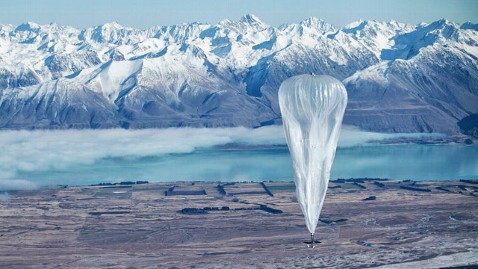Google Project Uses Balloons to Expand Internet Access

The large balloons will be used to provide internet access to remote or rural areas. (Jon Shenk/AP Photo)
Forget wireless Internet, search-engine giant Google now wants to produce balloon-powered Internet for rural areas.
The company today announced the start of Project Loon, a plan to send large floating balloons into the stratosphere to provide Internet access to rural or remote areas, in addition to helping people get online after major disasters.
According the project's website, each balloon can provide Internet service to a 40 kilometer diameter area with speed equivalent to a 3G connection. The balloons would float at an altitude higher than air traffic or weather patterns. The balloons would be steered by "sailing" through winds from controllers on the ground.
Users on the ground have to attach a special Internet antennae to their home to pick up signals.
The ambitious project, currently still being tested, is the newest Google "Moon Shot" from their Google X Labs, which also pioneered Google Glass and self-driving cars.
If you think the idea sounds far-fetched even the project's manager, Mike Cassidy, agrees with you. The name Project Loon was chosen because the idea of spreading Internet access through balloons "may sound a bit crazy."
However, Cassidy writes that approximately two out of three people across the globe do not have access to the Internet and Project Loon could help remedy that situation without major construction.
"We imagine someday you'll be able to use your cell phone with your existing service provider to connect to the balloons and get connectivity where there is none today," Cassidy wrote in a blog post.
The Project Loon team's first big challenge starts this weekend when they plan to launch 30 balloons in New Zealand for a test run.